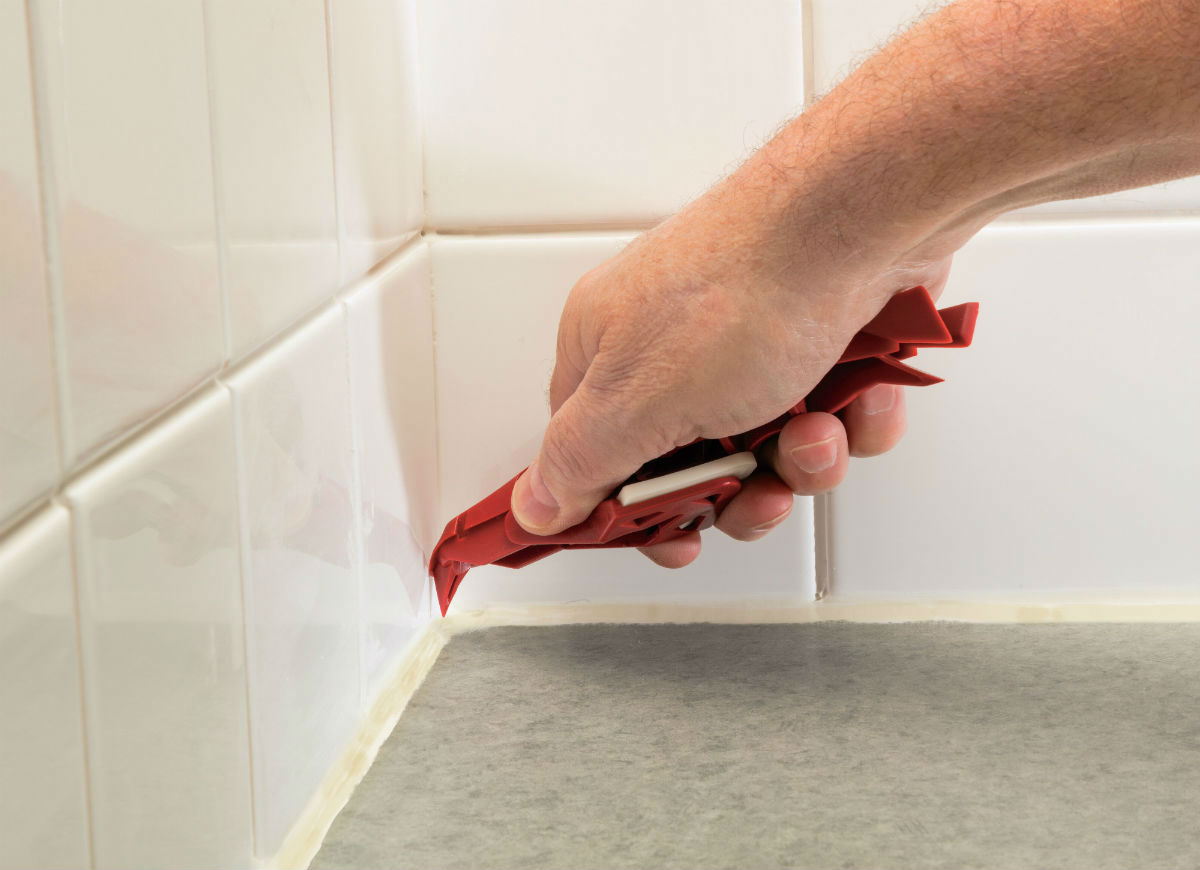We may earn revenue from the products available on this page and participate in affiliate programs. Learn More ›
Novice DIYers eager to get started repairing, replacing, or installing new tile may wonder about the differences between grout and caulk. Both products, basic to tile most projects, have adhesive properties. Compare the two any further—grout vs. caulk—and you’ll see that each has specific uses and they’re not interchangeable. Keep reading to understand how and where each product shines to ensure terrific-looking, long-wearing tile.
For starters, grout and caulk have different properties and packaging.
Grout is a masonry product that comes as a dry powder in a bag. It requires mixing with water to activate its adhesive properties, which become rock-hard when the grout cures. Caulk is a flexible, semi-liquid product made from latex, silicone, or acrylic that is packaged in tubes. Unlike grout, caulk retains a measure of flexibility after it cures, allowing it to stretch slightly if any movement, such as the house settling, occurs.

Grout fills the joints between tiles.
The sole purpose of grout is to fill the spaces between tiles after the tiles have been glued in place on a floor or on a wall. Grout keeps the tiles from shifting, and also protects the edges of tile from chipping. There are two types of grout, sanded and unsanded. Sanded grout (view example on Amazon) is used in joints ⅛ inch or wider, while unsanded grout (view example on Amazon) is used to fill joints less than ⅛ inch wide. When choosing grout, always read the intended purposes listed on the package. Some grout is not suitable for all types of tile, and others contain additives to increase their durability and holding power.
Caulk seals seams between tile and fixtures or walls.
Caulk provides a waterproof seal where tile abuts other materials, such as bathtubs, sinks, or walls. A carefully run line of caulk (known as a bead) in these areas adds a finished touch. Caulk is stickier than grout and adheres to the surfaces of many different materials, including drywall, wood, glass, and porcelain fixtures.

Grout is the better choice for wet areas.
Though grout is more porous than caulk, it’s best for tiled shower walls and floors. This is largely because of the way grout binds with backer board, the concrete material placed behind tiles. Backer board, tiles, and grout combine to form a water-impervious masonry surface, keeping moisture from saturating wall studs—and preventing mold growth and wood damage.
Caulk performs well in angled seams.
Grout is generally the best choice for filling joints between tiles in showers or elsewhere. but where two tiled shower walls meet, or where a shower wall meets the floor (called “change of plane”), waterproof silicone caulk (view example on Amazon) comes in mighty handy. Grout in these particular seams is more likely to crack due to settling. Some tile setters fill these seams with matching color caulk because it’s more flexible should movement occur. Others still use grout but switch to an epoxy grout (grout with epoxy added), which makes cracking less likely.

Caulk is more likely to shrink over time.
When grout cures, it forms a solid masonry surface that won’t contract or pull away. While movement can crack rigid grout lines, the grout itself won’t shrink. Caulk, however, is known for shrinking over time and pulling away, and when it does it must be removed and replaced.
Grout in a shower is more likely to develop stains.
Grout is porous, which makes it more likely to develop mildew and stains than silicone caulk (the waterproof type, suitable for wet areas). For example, if you apply silicone caulk to seal around the drain in the tile shower floor, you can wipe it clean with a damp rag and it will look as good as new. Grout lines, however, require more careful attention to stave off unsightly stains. First of all, grout should be sealed, and tiled shower surfaces should be cleaned weekly with an all-purpose bathroom cleaner to keep grout stain free; using a daily after-shower spray also helps.

Grout is messier—but easier—to apply than caulk.
Grout is spread over a newly tiled surface and worked into the joints with a hard sponge applicator. This results in excess grout getting smeared over the tile face, which should be wiped off before it dries. Caulk goes on neatly but it requires a steady hand, experience, and skill to run a smooth, professional-looking bead of caulk.
Caulk is easier to replace than grout.
When either product fails (grout by cracking or crumbling, caulk by pulling away), both must be replaced. Replacing caulk is a relatively simple process of scraping and pulling the old bead of caulk out of the seam and then running a new bead. Replacing a grout line requires the use of a grout saw or a rotary tool to grind away the grout before you can mix new grout and apply it to the joint.

Caulk has other uses around the house.
Grout is only used to fill the joints between tiles, while caulk can seal seams in many spots—along baseboards and crown molding, on windows to stop leaks and drafts, and anywhere two construction materials meet, even on outdoor concrete. This makes caulk the more versatile of the two products.
RELATED: 15 Problems Around the House That You Can Solve With Caulk
Both caulk and grout are great products that you’ll want to use over and over in your repair and remodeling projects.
Keep in mind, however, only grout should be used to fill grout joints (except for change of plane angles noted above). Caulk is suitable for use virtually everywhere else you need to seal a seam between two materials. Both products come in an assortment of colors to match your needs.


